Galapagos Species Database
The Galapagos Species Database shares the information about the species from our Natural History Collections.
Aristolochia elegans
cálico, flor de patito, patito elegante, elegant dutchman's pipe, calico flower
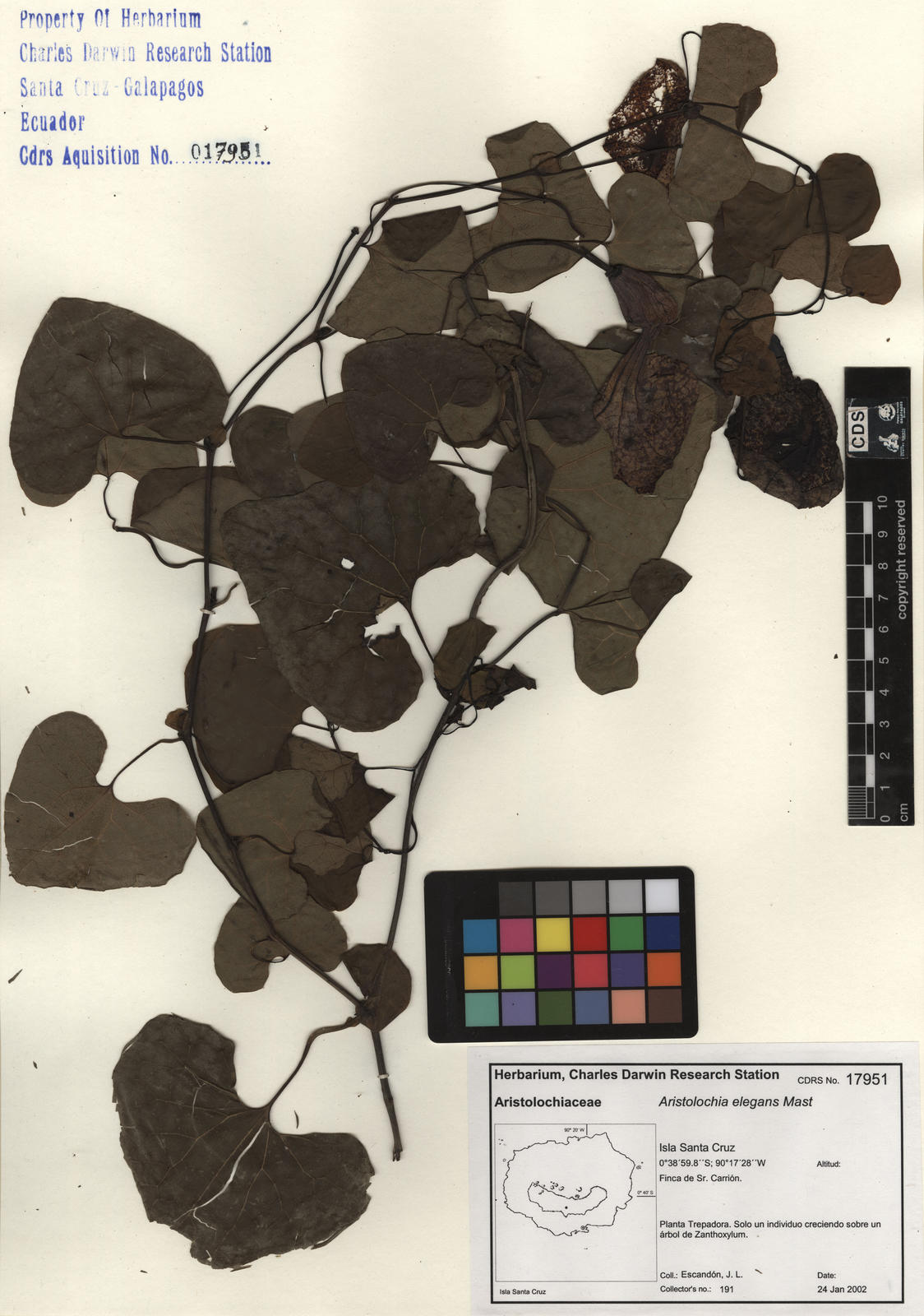
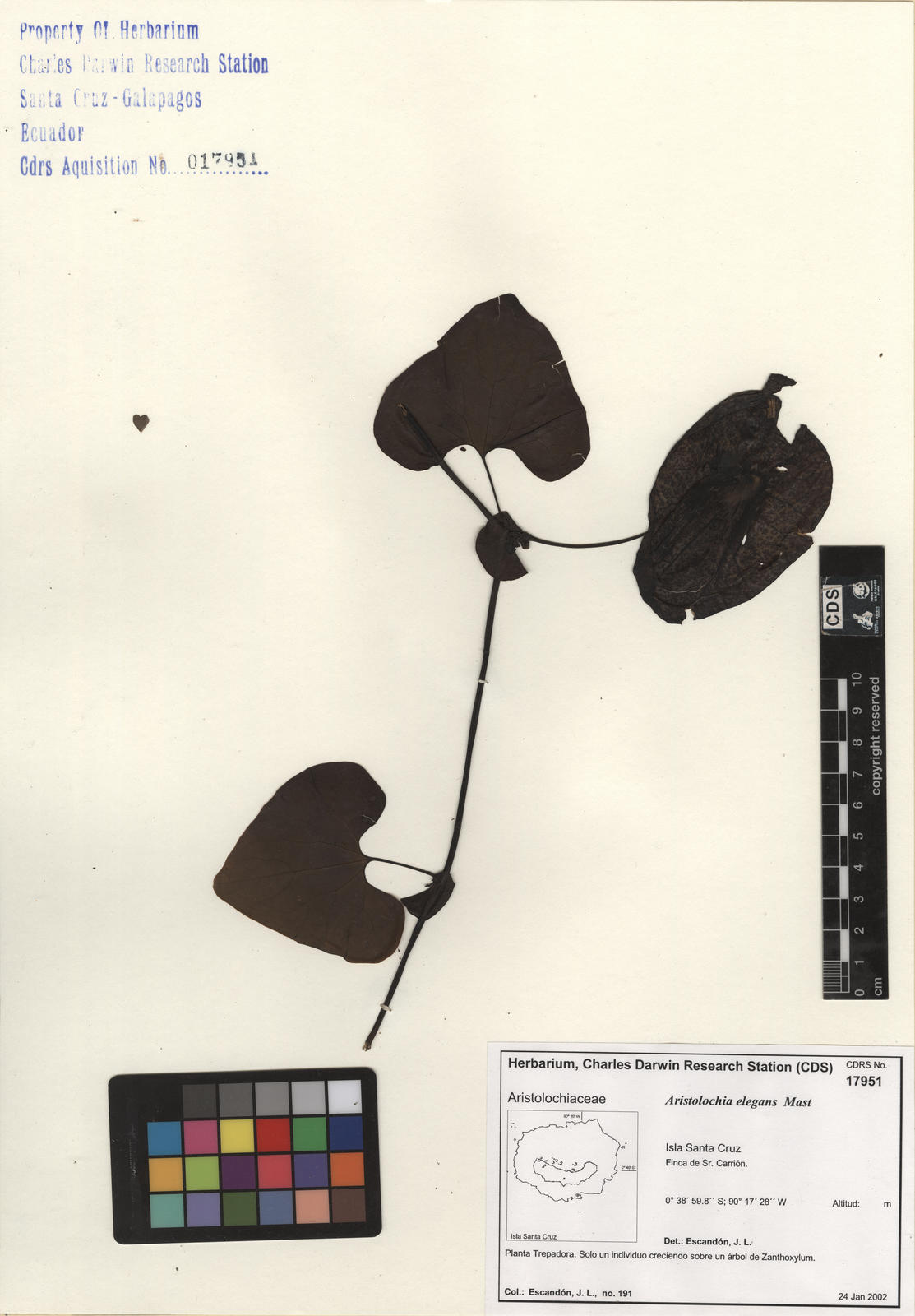
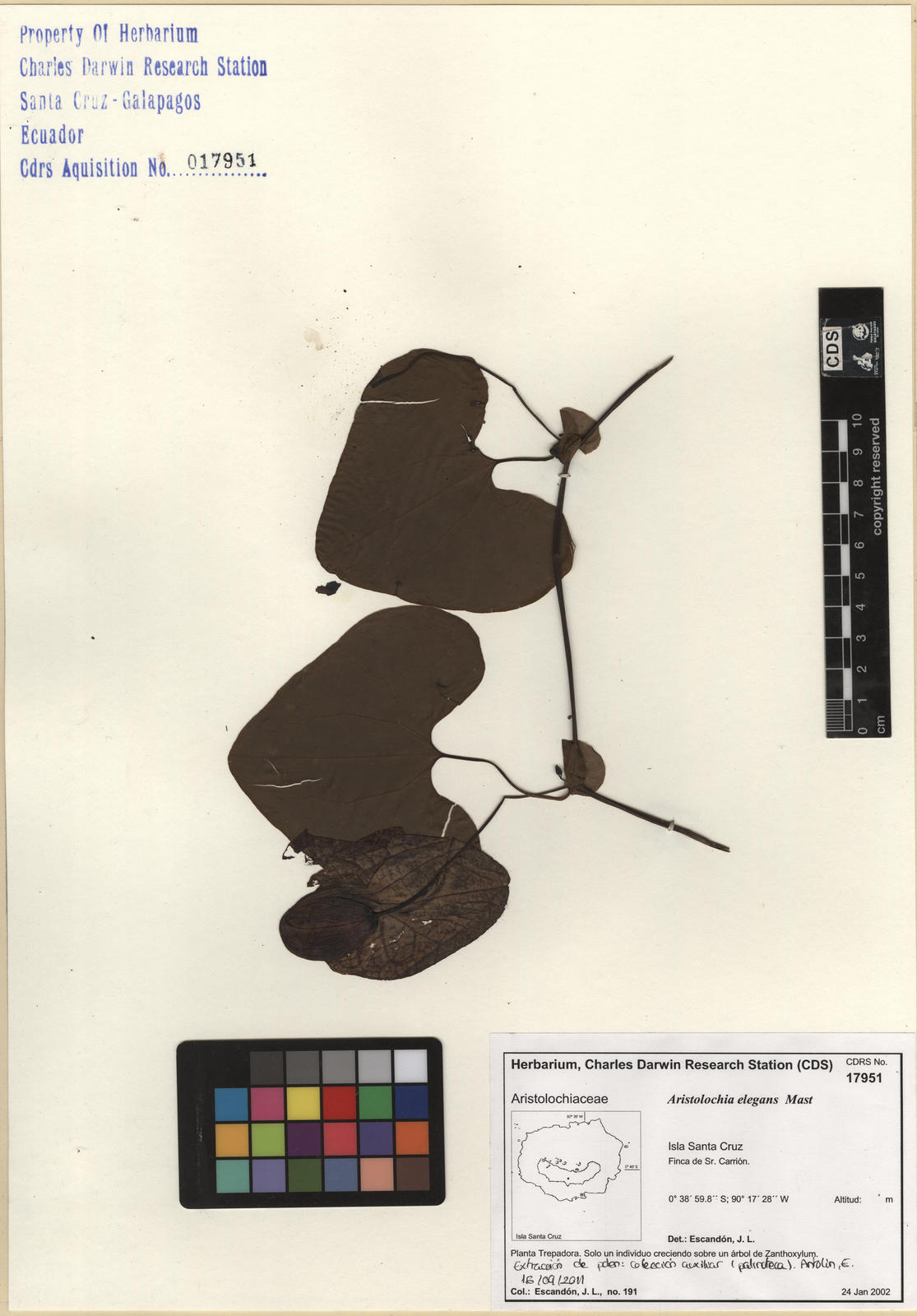
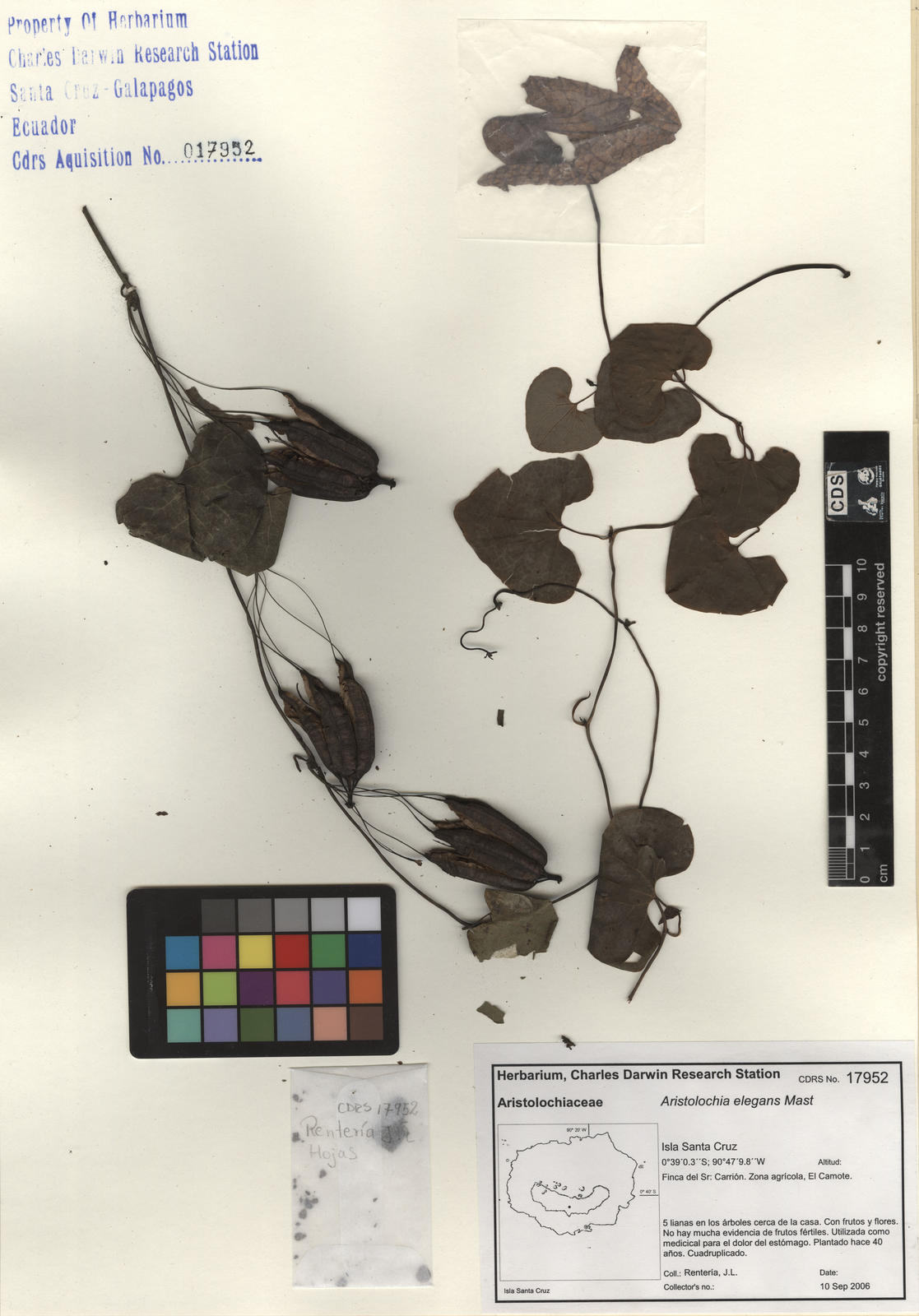

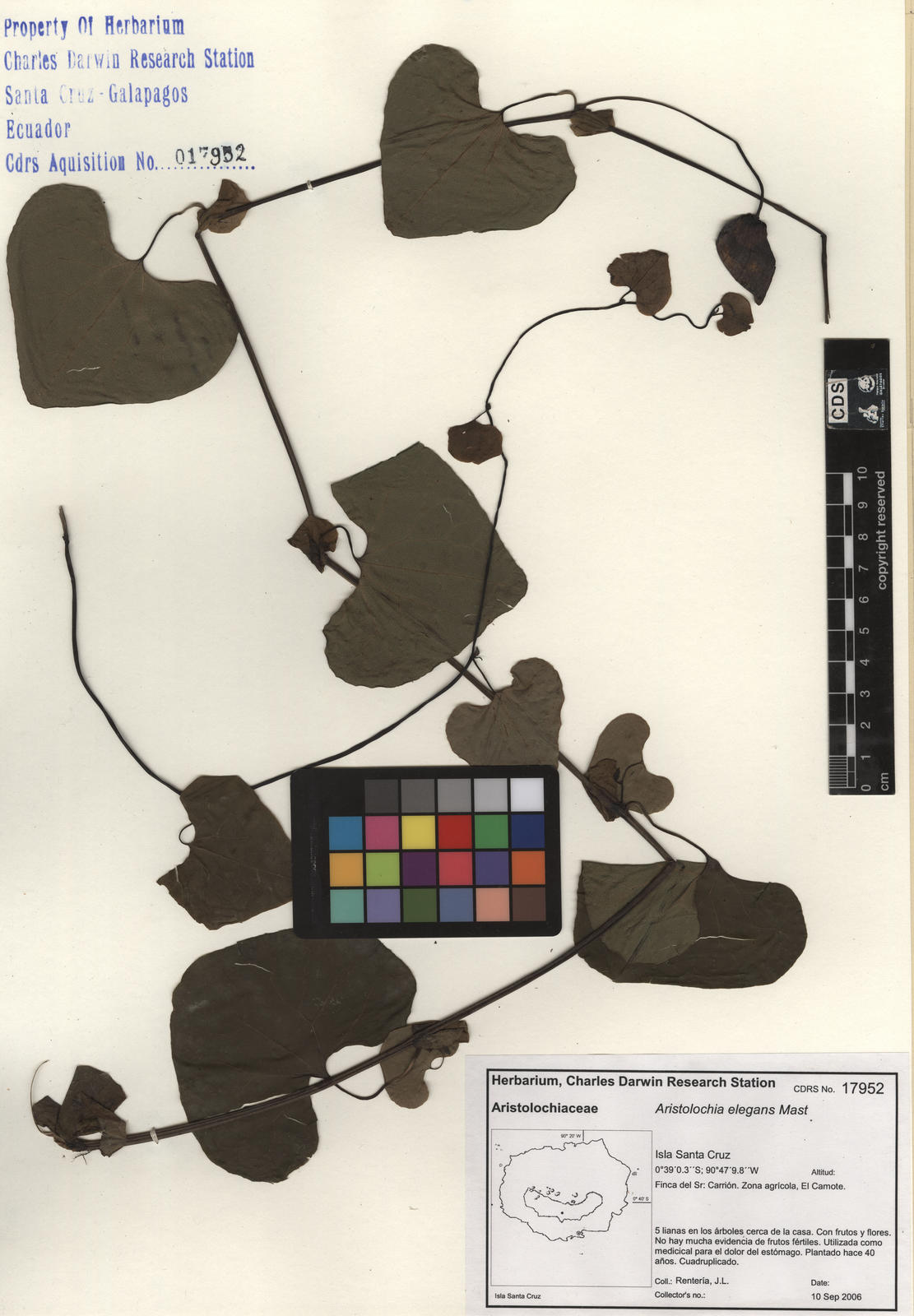

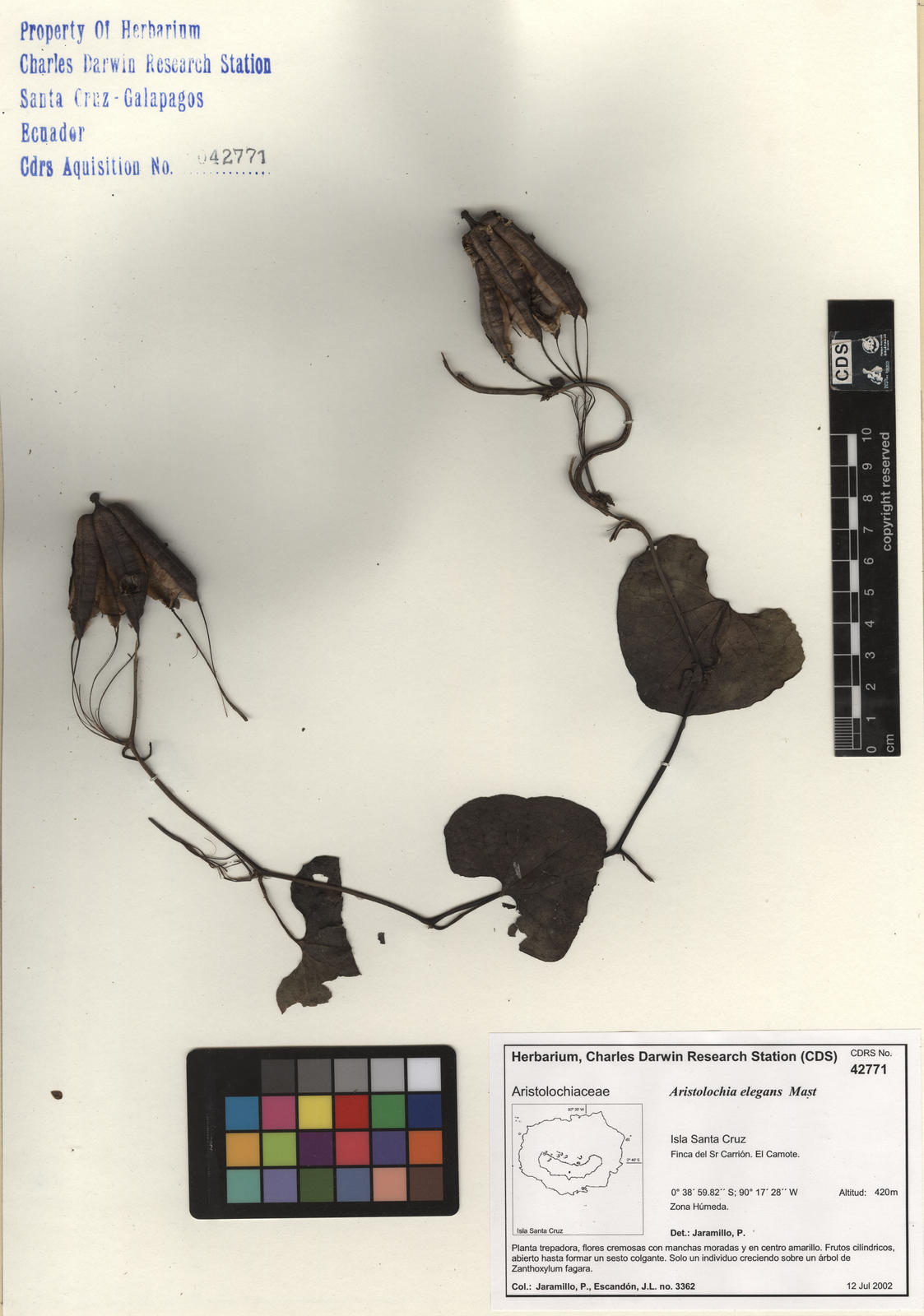
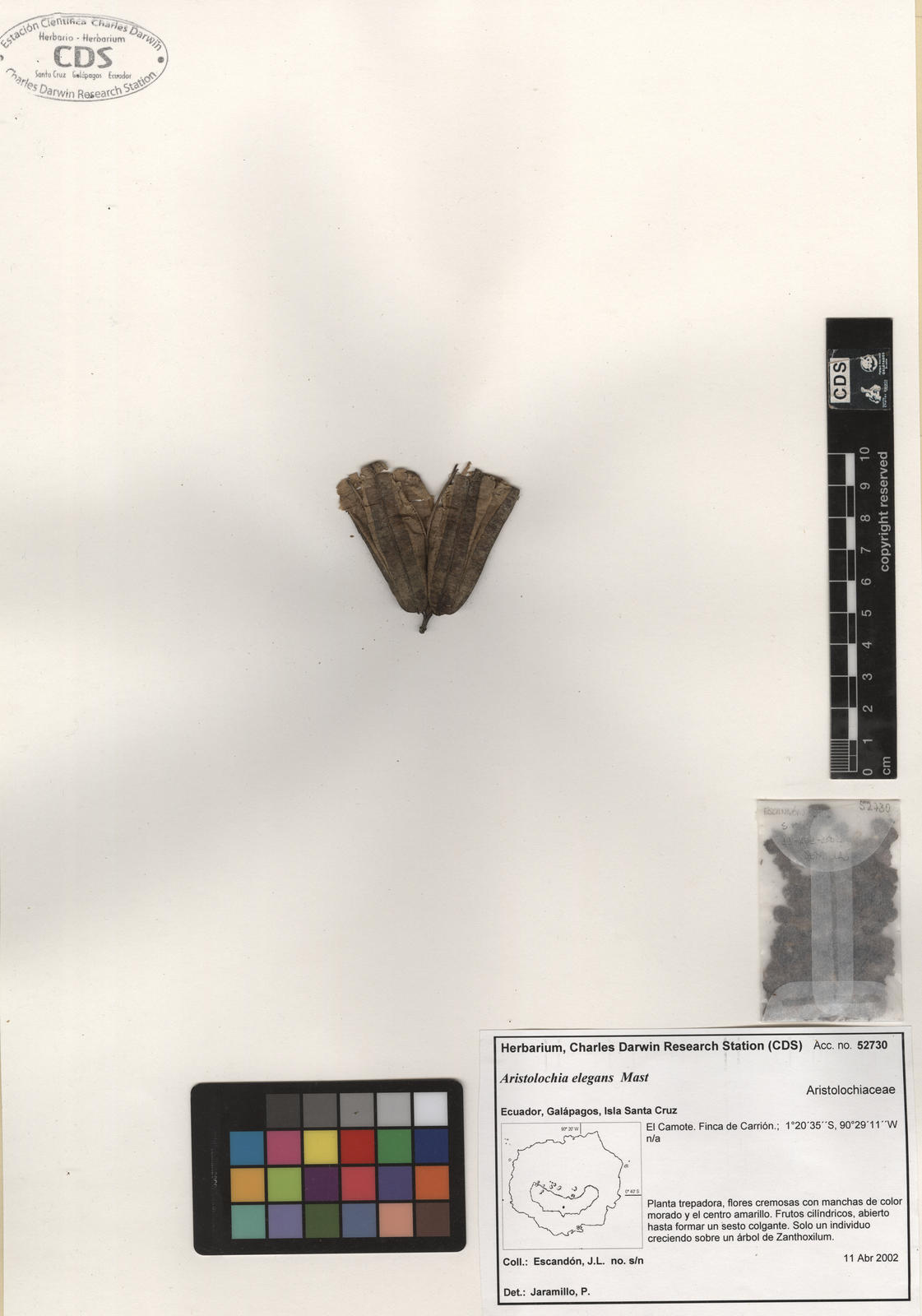
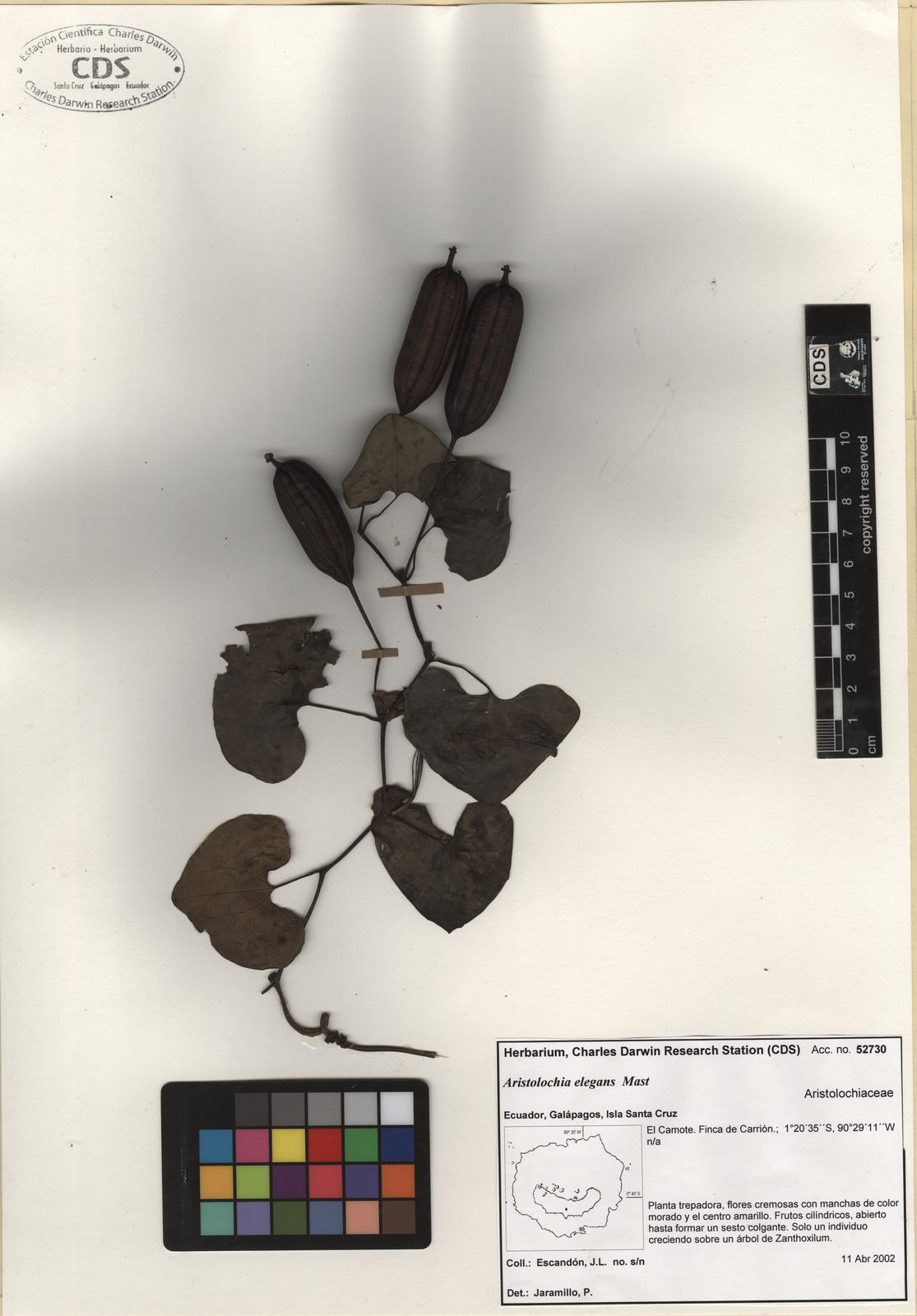




A perennial creeping vine that can reach 3 m in height. Leaves are alternate, heart-shaped, 3–10 cm long and 3–12 cm wide. Elegant dutchman's pipe is grown for its large purple and white-spotted flowers.
A perennial creeping vine of rapid growth that can reach 3 m in height. It has heart shaped leaves, a beautiful purple flower with white spots, and reproduces by seeds or root fragments. A. elegans is grown as an ornamental.
Domain
Eukaryota
Kingdom
Plantae
Phylum
Magnoliophyta
Class
Magnoliopsida (= Dicotyledoneae)
Order
Aristolochiales
Family
Aristolochiaceae
Genus
Aristolochia
Species
elegans
Taxon category: Accepted
Syn.: Aristolochia elegans var. grandiflora Hassl. ex F. González
Taxon origin: Introduced - established
Preference for an altitude zone in Galapagos: Humid zone
Habitat preferences: Fertile and wet soils.
Trophic role: Primary producer
Persistence mechanisms: Seeds
Reproductive biology: Reproduces via seeds and root fragments.
Growth form: Crustose
Distribution origin: South America
Economic Use: Grown as an ornamental.
Mode of introduction: Intentional
Introduction Pathway: Intentional
Subpathway: Agriculture/Horticulture
Introduced status: Human dependent
Impact in Galapagos: Currently not a problem in the Galápagos
Impact elsewhere: The vine is known to cover and choke trees and vegetables causing a negative economic, environmental, and social impact. Also very toxic to humans and livestock.
Control History in Galapagos: It was introduced for medicinal reasons more than 30 years ago, but its presence was not first recorded until 2004. If the plants do not resprout from the roots, eradication of A. elegans from the Galapagos would be feasible since there are few plants and their distribution is restricted to a single site. However, the owner refuses to allow their removal.
Control methods elsewhere: Small plants can be pulled by hand making sure to completely remove the root, for plants of medium height it is necessary to remove the plant by following the stem down to find the taproot.
Known Pest elsewhere: Hawaii, Pacific Islands, Isla del Coco, Australia
Year of first record: 2002
Map of specimen collection localities or observation records for this species in our collections database.
Distribution: Currently restricted to a single farm on Santa Cruz, originally from South America and the South Indies.
- Tropicos.org. (2017) Database of Missouri Botanical Garden. Tropicos.org. Missouri Botanical Garden. 06 Oct 2017 <http://www.tropicos.org


Dispersal propagule: Varius
Disperses with seeds and vegetatively via root fragments.